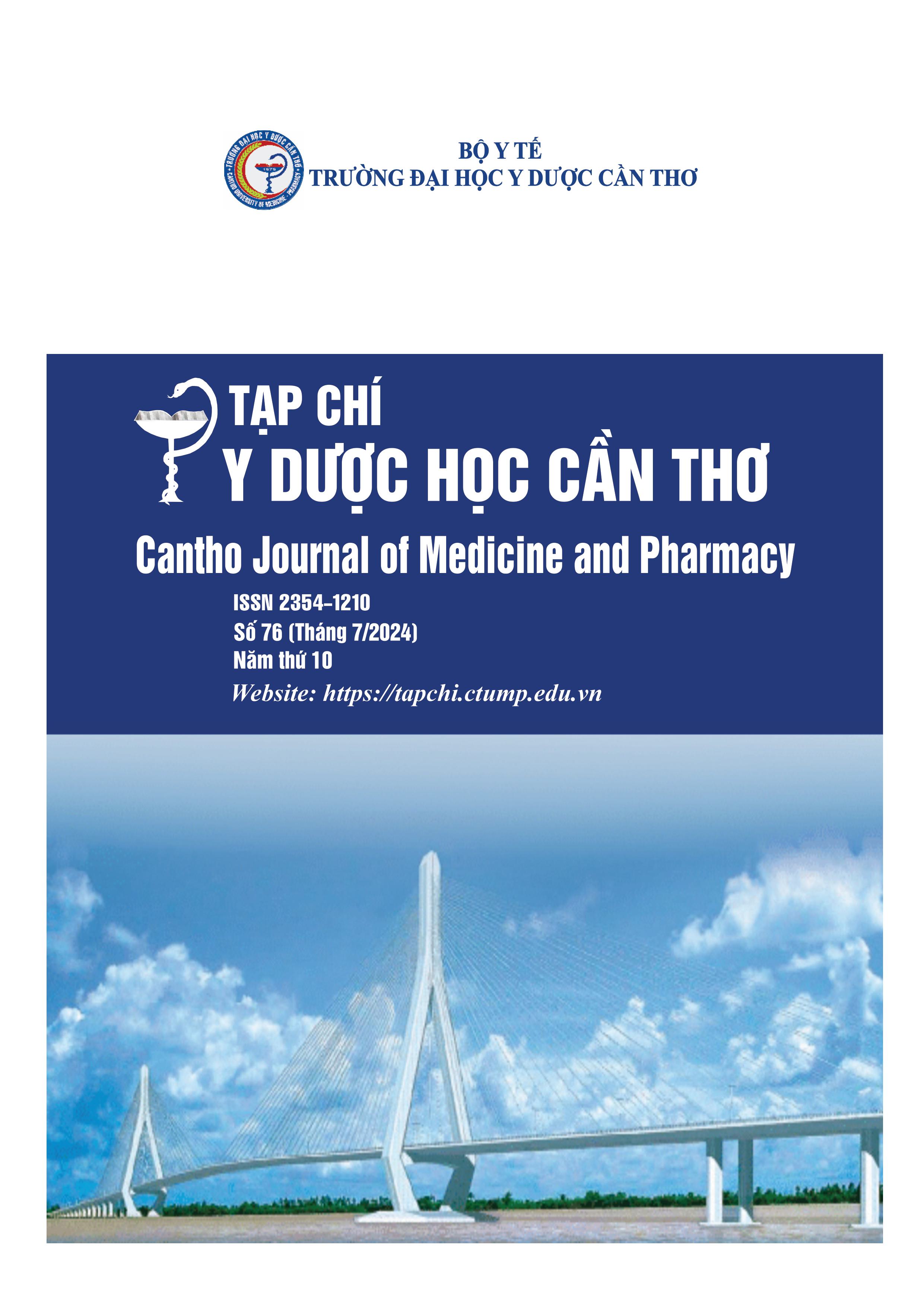CLINICAL, SUBCLINICAL CHARACTERISTICS AND ASSOCIATED FACTORS OF ANDROGENETIC ALOPECIA PATIENTS AT CAN THO DERMATO-VENEREOLOGY HOSPITAL IN 2022-2023
Main Article Content
Abstract
Background: Androgenetic alopecia (AGA) is a condition characterized by gradual thinning and shedding of hair, primarily at the frontal and vertex regions, due to genetic predisposition and androgen hormone dependence. It is the most common type of hair loss in both men and women. However, there is limited research on this condition in Vietnam. Some studies have reported an association between clinical disorders and the severity of AGA, such as lipid metabolism disorders, but evidence is scarce. Objectives: To describe the clinical, paraclinical characteristics and some associated factors of androgenetic alopecia patients at Can Tho Dermato-Venereology Hospital in 2022-2023. Materials and methods: A series of cases involving over 30 patients diagnosed with androgenetic alopecia presented for examination at Can Tho Dermato-Venereology Hospital in 2022-2023 were described. Results: The average age of the study population was 40.7±13.7 years, with 60% female and 40% male. Mild AGA accounted for 26.7%, moderate for 40%, and severe for 33.3%. The duration of the disease was 3.3±1.59 years. Positive hair pull test was observed in 73.3% of cases. Family history of AGA was present in 83.3% of cases. The levels of cholesterol were 4.64±0.78 mmol/L, triglycerides 1.51±0.44 mmol/L, HDL-c 1.09±0.26 mmol/L, and LDL-c 2.87±0.51 mmol/L. The severity of the disease was positively correlated with serum cholesterol, triglyceride, and LDL-c levels. There was no difference in HDL-c levels between the severity groups of AGA. Conclusions: The disease typically initiated in middle age. There were differences in severity between genders. The longer the duration of the disease, the more severe it tends to be. Family history was related to the incidence rate of the disease. A positive hair pull test assessed disease activity. There was a correlation between AGA and dyslipidemia.
Article Details
Keywords
androgenetic alopecia, clinical, subclinical, associated factors, dyslipidemia
References
2. Vañó-Galván, S., Saceda-Corralo, D., Blume-Peytavi, U., Cucchía, J., Dlova, N. C., et al. Frequency of the Types of Alopecia at Twenty-Two Specialist Hair Clinics: A Multicenter Study. Skin appendage disorders. 2019. 5(5), 309-315, https://doi.org/10.1159/000496708.
3. Sathyanarayanan, H., & Sundaram, M. Study of Association of Dyslipidemia in Male Androgenetic Alopecia Patients in a Tertiary Care Hospital. Cureus. 2024. 16(1), e51741, https://doi.org/10.7759/cureus.51741.
4. Salman, K. E., Altunay, I. K., Kucukunal, N. A., & Cerman, A. A. Frequency, severity, and related factors of androgenetic alopecia in dermatology outpatient clinic: hospital-based crosssectional study in Turkey. Anais brasileiros de dermatologia. 2017. 9(2), 35-40, https://doi.org/10.1590/abd1806-4841.20175241
5. Hamilton J. B. Patterned loss of hair in man; types and incidence. Annals of the New York Academy of Sciences. 1951. 53(3), 708–728, https://doi.org/10.1111/j.1749-6632. 1951.tb31971.x
6. Al Aboud AM, Zito PM. Alopecia. In: StatPearls. StatPearls Publishing, Treasure Island (FL). 2023.
7. McDonald KA, Shelley AJ, Colantonio S, Beecker J. Hair pull test: Evidence-based update and revision of guidelines. Journal of the American Academy of Dermatology. 2017. 76(3), 472-477, https://doi: 10.1016/j.jaad.2016.10.002.
8. Park, S. Y., Oh, S. S., & Lee, W. S. Relationship between androgenetic alopecia and cardiovascular risk factors according to BASP classification in Koreans. The Journal of dermatology. 2016. 43(11), 1293-1300, https://doi.org/10.1111/1346-8138.13355.
9. Nantermet, P., Harada, S., Liu, Y., Cheng, S., Johnson, C., et al. Gene expression analyses in cynomolgus monkeys provides mechanistic insight into high-density lipoprotein-cholesterol reduction by androgens in primates. Endocrinology. 2008. 149(4), 1551-1561, https://doi.org/10.1210/en.2007-1151.
10. Banger, H. S., Malhotra, S. K., Singh, S., & Mahajan, M. Is Early Onset Androgenic Alopecia a Marker of Metabolic Syndrome and Carotid Artery Atherosclerosis in Young Indian Male Patients? International journal of trichology. 2015. 7(4), 141-147, https://doi.org/10.4103/0974-7753.171566.


